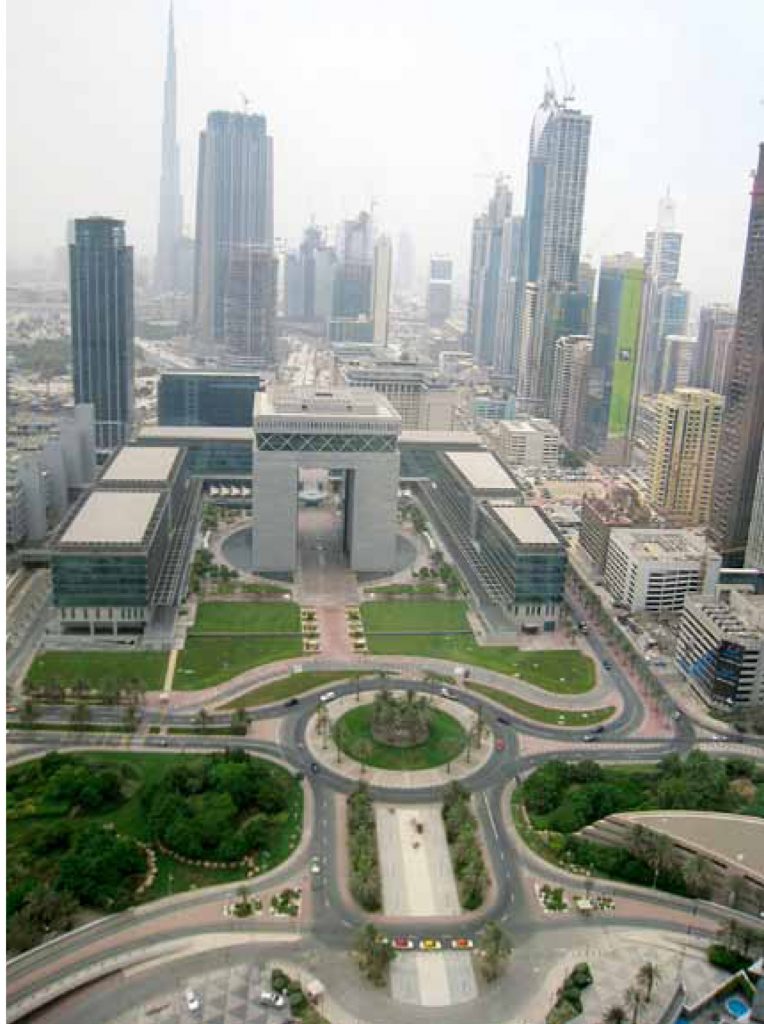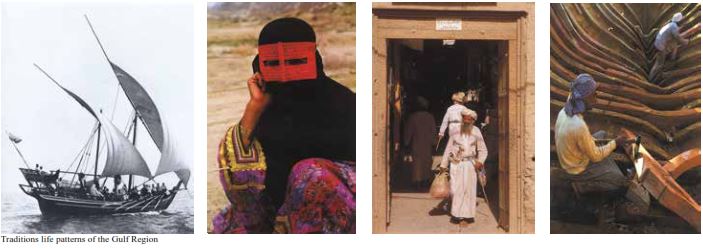THE CHALLENGES OF SUSTAINABLE DEVELOPMENT AROUND THE PERSIAN GULF
Ahmad Zohadi
calls for a rethink to design approaches
Published in Urban Design Magazine (Urban Design Group Journal) #124, Autumn 2012
ISSN 1750 712X
Theme: Urban Design in the Middle East
Sustainable urban development in the Persian Gulf region is as important as everywhere else in the world, and in designing for it many factors should be taken into consideration. These can be divided into two categories: the first is the physical or phenomenal factors, and the second is non-physical factors. Both of these should be simultaneously considered and incorporated into any sustainable plan. Examples of physical factors are environmental, ecological and geographical; and the non-physical factors – traditions, religion, beliefs, and history – affect and make up the cultural identity of any society. These in turn create and shape all aspects of society including art and architecture, because our cultural beliefs shape the way that we view ourselves and perceive the world.
Therefore it is essential to take account of all of these factors: ecological, geographical, traditional, demographical, religious and more, when we are planning any sustainable urban development.
Various experts and researchers have highlighted the necessity of developing new design solutions and guidelines for urban design and architecture for the Persian Gulf region. Their research outcomes encourage further and more detailed research and practical applications of the findings by major institutions. This article offers a brief review of the latest recommendations for more environmentally and culturally sustainable designs than the current planning, design, construction practices and models that are in use today. Current practice for the most part demonstrates serious shortcomings, due to high resource consumption, urban pollution, a loss of quality and urban cohesion, as well as lacking an indigenous sense of cultural identity.
OUTDATED APPROACHES
In almost every field of urban life, Middle Eastern countries are at a critical threshold, particularity the oil-rich states, which include Kuwait, Saudi Arabia, Bahrain, Qatar, United Arab Emirates, Oman, Iran and Iraq. Acquiring enormous wealth and at the same time seeing current political reform, the eastern region countries of the Arabian Peninsula in particular, are seeing extensive developments which with more advanced and broader visions could be greatly improved to adapt to the environment and cultures of this high radiant-energy gain region of the world.
In proposed building designs or those recently built, there are good intentions by all decisionmakers. However the development and building models used are mostly based on obsolete and irrelevant prototypes of urban design and architecture, which will compromise their cost effectiveness, longevity and historical value. Furthermore, they will burden their governments with long-term urban infrastructure energy waste, high operation and maintenance costs, while generating significant urban pollution.
If we look at the situation on a larger regional scale, there is an ecological concern due to extensive oil and gas exploration and drilling activities, in addition to the massive oil tanker and other commercial shipping traffic, which provide the economic life of the region. As increased wealth leads to population growth along the shoreline and increasing recreational tourism, the ecological well-being of these zones and its sea life has to be preserved and protected. Added to that is global warming, and the forecast sea level rises which
will have direct impact on the future coastal developments. Therefore, there is an urgent need for an integrated land-sea strategy for sustainable growth on local and regional and global levels.
SOCIAL NEEDS
In addition to these physical shortcomings, there are other hidden disadvantages that will eventually rise to the surface in society when cities develop rapidly, but without consideration of the cultural identity of the people living there. This can lead to many problems, such as a lack of cohesion among residents, a loss of sense of belonging, and feelings of despair as residents feel disconnected and alienated from their culture, religion, tradition and history. These non-physical factors are as important as physical factors if we are to have real sustainable growth and development. Consequently it is essential to design a plan which is in harmony with any given society’s cultural identity. For instance, Islam is the predominant religion in the region and Islamic values and guidelines have shaped the value-system, beliefs and ways of thinking, therefore the Islamic style should be incorporated and considered in design when developing a new sustainable urban project. Of course, religion is not the only factor, other regionally and nationally specific historical beliefs and trends should also be considered.
Climatic and geographical factors can also lead to diversification in customs and lifestyles, and as a result create different and unique forms of architecture
Demographic factors should also be considered, a society can consist of many different races with different languages, customs, traditions and belief systems. In designing a sustainable urban development we need to make sure that all of these groups’ unique characteristics are taken into account and are symbolically represented in urban design and buildings. Such demographic considerations have been slow to emerge or even non-existent in current developmental plans, especially in the Arab States, where a large percentage of migrants have lived there for decades, but their cultural identity is ignored or barely noticeable. If not addressed, this may lead in the near future to social problems which will affect the future stability of these countries.
Climatic and geographical factors can also lead to diversification in customs and lifestyles, and as a result create different and unique forms of architecture; these should be incorporated in design, because they symbolically represent and are part of the area’s identity. For instance the hot and harsh climate of the desert region in central Iran near the city of Yazd, and in southern parts of Iran on Qeshm Island in the middle of Persian Gulf, had forced the indigenous people to invent a type of architecture suitable for those weather conditions. There we find wind-catchers built on the roofs of buildings, which help to reduce the temperature inside, making it cooler and more liveable on hottest days of summer. Seeing rows of these striking yet functional architectural elements creates a unique urban scene.
A VISION
There are clearly compelling reasons to undertake more extensive research in order to find, develop and apply potential new design solutions, which could give birth to more sustainable human communities and urban systems in the Middle East. My vision is not against using the latest modern methods in construction. My position and beliefs are that contemporary architecture and urban design should consider, keep and use its traditional and cultural identity, address ecological concerns, while incorporating new methods, technologies and systems where they may be more practical and suitable for today’s needs.
PDF 1




